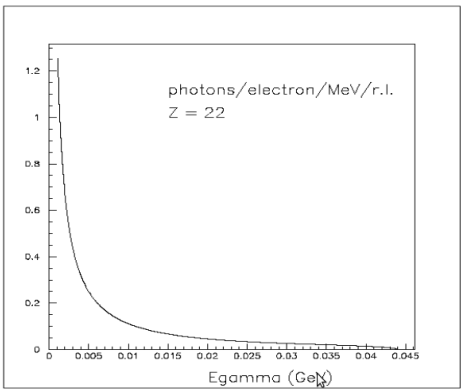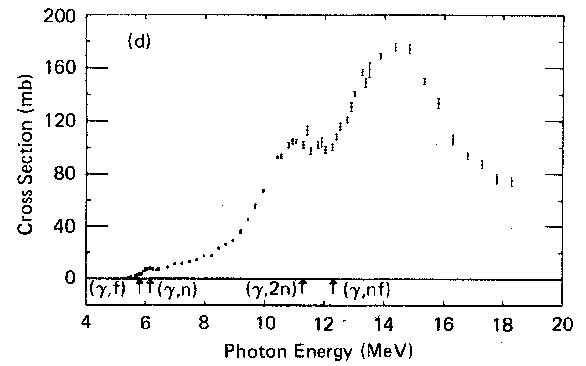Counts Rate (44 MeV LINAC)
Revision as of 16:41, 19 May 2010 by Oborn (talk | contribs) (→photonuclear cross section \^{238}U(\gamma , n) reaction)
Counts Rate for U238
LINAC parameters used in calculations
1) pulse width 50 ns
2) pulse current 50 A
3) repetition rate 300 Hz
4) energy 44 MeV
Number of electrons/sec on radiator
Number of photons/sec from radiator
bremsstrahlung
in (10,20) MeV region we have about
0.1 photons/electrons/MeV/r.l
radiation length
r.l.(Ti) = 3.59 cm
radiator thickness = 12.5
steps together...
Collimation factor
Collimation factor is
4-6 % of total # of photons (Alex, GEANT calculation)
then, incident flux on target is
Number of neutrons/sec (yields)
photonuclear cross section reaction
in (10,20) MeV region the average cross section is:
130 mb
target thickness,
Target thickness = 1 cm:
neutrons per fission
2.4 neutrons/fission
steps together...yeild
Worst Case Isotropic Neutrons
Let's say we have:
radius detector = 1 cm
1 meter away
fractional solid angle = <= geometrical acceptance
finally we have
Therefore, this experiment is really doable.
Counts Rate for Deuteron
photonuclear cross section reaction=
calibration factor
The only difference from calculations above is cross sections

